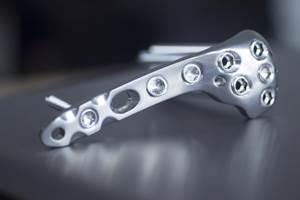Get to Know Cleanliness Standards
With a small amount of practice, it is possible to understand the underlying motivation of a cleaning standard and to figure out the specific aspects of the specification that are applicable to the customer.
Mention “standards,” and people’s eyes glaze over. One colleague claims to ignore all references to standards in contracts. This is not wise. Understanding and complying with cleaning standards is essential in the event of an audit and to avoid liability. There are also non-punitive benefits to understanding standards.
One common question goes something like, “Why can’t there be a single cleanliness standard? Every customer wants us to comply with a different one.” There are reasons for the abundance of specifications. For one thing, there are different types of soil. Common surface residue is often classified as thin film, particulate or mixtures of the two. Residue may be organic, inorganic or biologic-based. In enclosed systems, volatile residue can be a problem. Acceptably low residue (of whatever type) depends on the application. Depending on the product, specific residue may damage the surface, interfere with surface finishing, interfere with assembly or compromise product performance. Some products have a low tolerance for particles, others are sensitive to thin film residue. Some thermal spray processes are readily compromised by organic residue, but can tolerate particulate residue left from, for example, aluminum oxide grit blast. Standards associated with implantable medical devices address avoiding undesirable interaction of residue with the body.
Standards do not spring up in a vacuum. Standards are reflective of the era when they were written, geography, language and the competing agendas of the people on the standards committees. People generally don’t sit through standards development meetings for their health. There are motivations for the standard, and the impetus is often a crisis. The crisis can be aesthetic issues, environmental requirements, coating failure, product failure or accidents. While some product cleanliness standards are applicable to a range of applications, others are specific. Parallel but not identical cleanliness standards can be found in medical, electronics, aerospace, semi-conductor and food processing. The technical terminology is often unique to the field; the issues of concern may be field-specific, and people in different fields don’t necessarily talk to each other. The bottom line is that a single, universal cleanliness standard is unlikely.
If a customer requires compliance to a standard, there is no escaping reading it. The good news is that with a small amount of practice, it is possible to understand the underlying motivation of the standard and to figure out the specific aspects of the standard that are applicable to the customer—what the customer is worried about. Read the standard analytically and also view it as if it were a crime novel. The motivation may be in the overview or purpose of it may pop up in an appendix.
There are practical, business benefits to understanding what cleanliness standards can accomplish. For example, a manufacturer of metal parts to be sold to surface finishers added the low cost ASTM F22 water break test for oil-like contamination as part of their manufacturing practice. This was a product feature that set them above the competition.
Sometimes, standards are a barrier, especially when a customer calls out a standard that is difficult to interpret or impossible to comply with. Individual companies may set up their own internal standards, practices or requirements and demand compliance from their suppliers. While some customer requirements are thoughtful and meant to assure product quality, others are best characterized as defensive.
The customer may call for compliance with an internal standard requiring that lubricant residue not interfere with their assembly process without specifying a maximum acceptable level of that residue. Proving that a residue does not interfere with production may be close to impossible. Whoever wrote the standard might not need to understand the realities of analytical techniques; or there could even be an attempt to shift responsibility back down the supply chain to the contract manufacturer. Response to such a customer pronouncement requires understanding standards and a modicum of diplomacy. If the customer will not provide clarification, and if the project is lucrative, it may be desirable to use or adapt industry standards to demonstrate the level of achieved cleanliness. For example, the contract manufacturer might set up a prudent cleaning and contamination control program and also use IEST-STD-CC1246 to determine the achieved level of thin film residue.
Make friends with cleanliness standards. Understand which ones are relevant for your purposes. Read the standards actively to find the motivations for the standards. The rewards include confidence in competitive bidding and successful outcomes when dealing with challenging customers.
About the Author
Barbara and Ed Kanegsburg
Barbara Kanegsberg, “The Cleaning Lady,” and Ed Kanegsberg, “The Rocket Scientist,” help companies achieve value-added cleaning processes. Contact them at BFK Solutions LLC, 310-459-3614, info@bfksolutions.com.
Related Content
Kyzen Solvents Provide Ease of Cleaning for Medical Parts
The Metalnox line of solvent products are designed to improve reliability and increase the ease of cleaning in vacuum and vapor degreasing processes.
Read MoreIndustrial Cleaning Shop Zeros In on Precision
This parts cleaning company is elevating its efforts to become a technical cleanliness expert, which presents an exciting, yet sometimes arduous, journey. The ongoing education of the team as well as significant investments in equipment and processes attribute to this shop’s success.
Read MoreKyzen Solvents Provide Safe Parts Cleaning
The SLV901 and SLV803 solvents are formulated to maintain cleaning efficacy while providing a safe, environmentally friendly alternative to processes that use PFAS and HFCs.
Read MoreCool Clean’s Omega 1500 Provides Powerful, Portable Cleaning
PMTS 2023: By selecting the appropriate nozzle and making the necessary propellant pressure and temperature adjustments, the Omega 1500 can clean to a variety of surface cleanliness levels.
Read MoreRead Next
Cleanliness Compliance is Critical for Automotive Suppliers
Although not every shop has been affected by cleanliness specifications, many suppliers to automotive OEMs are already complying with stringent cleanliness standards. In Ford Motor Co.’s case, it has created its own cleanliness standards in order to save money and credibility.
Read MorePMTS 2019 Cleaning Segment Focuses on Demand for Cleaner Parts
To get a feel for the current hot topics in parts cleaning prior to the show, we asked several of the exhibitors about what attendees should expect the show “buzz” to be as well as their thoughts and insights about the show and conference.
Read MoreThe Drive to Meet Strict Cleaning Standards
A high production stamping facility ups its game in process cleaning.
Read More










.jpg;maxWidth=300;quality=90)













